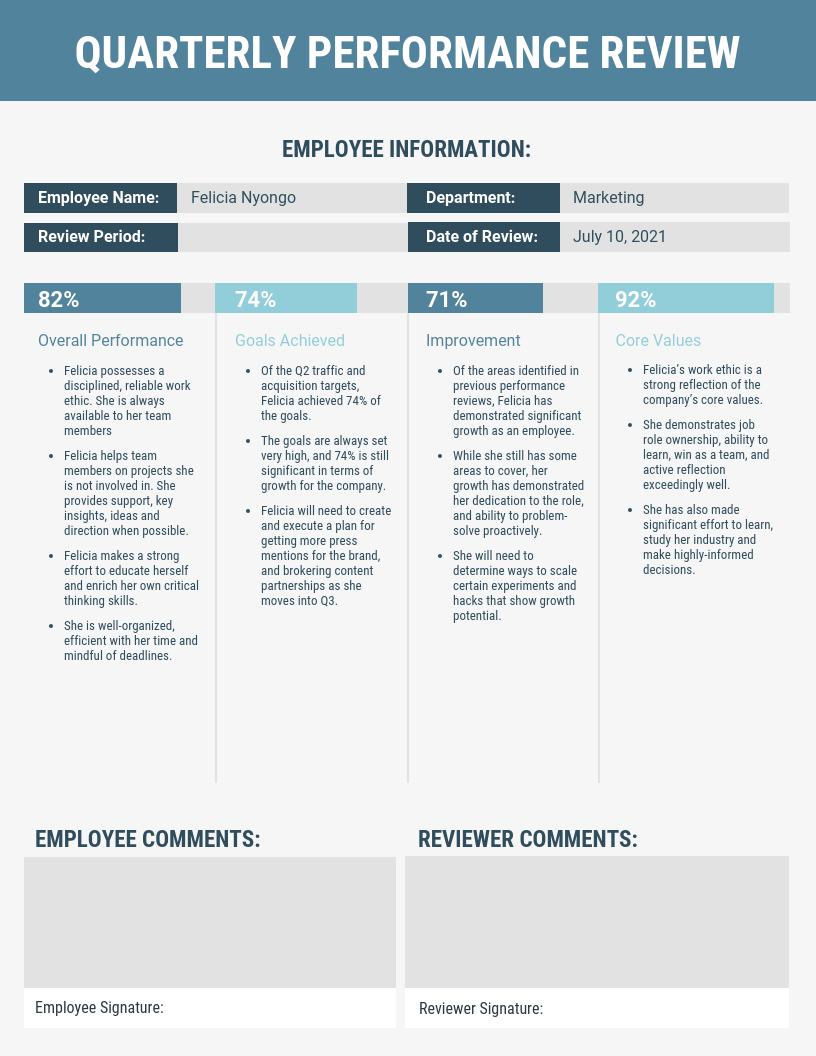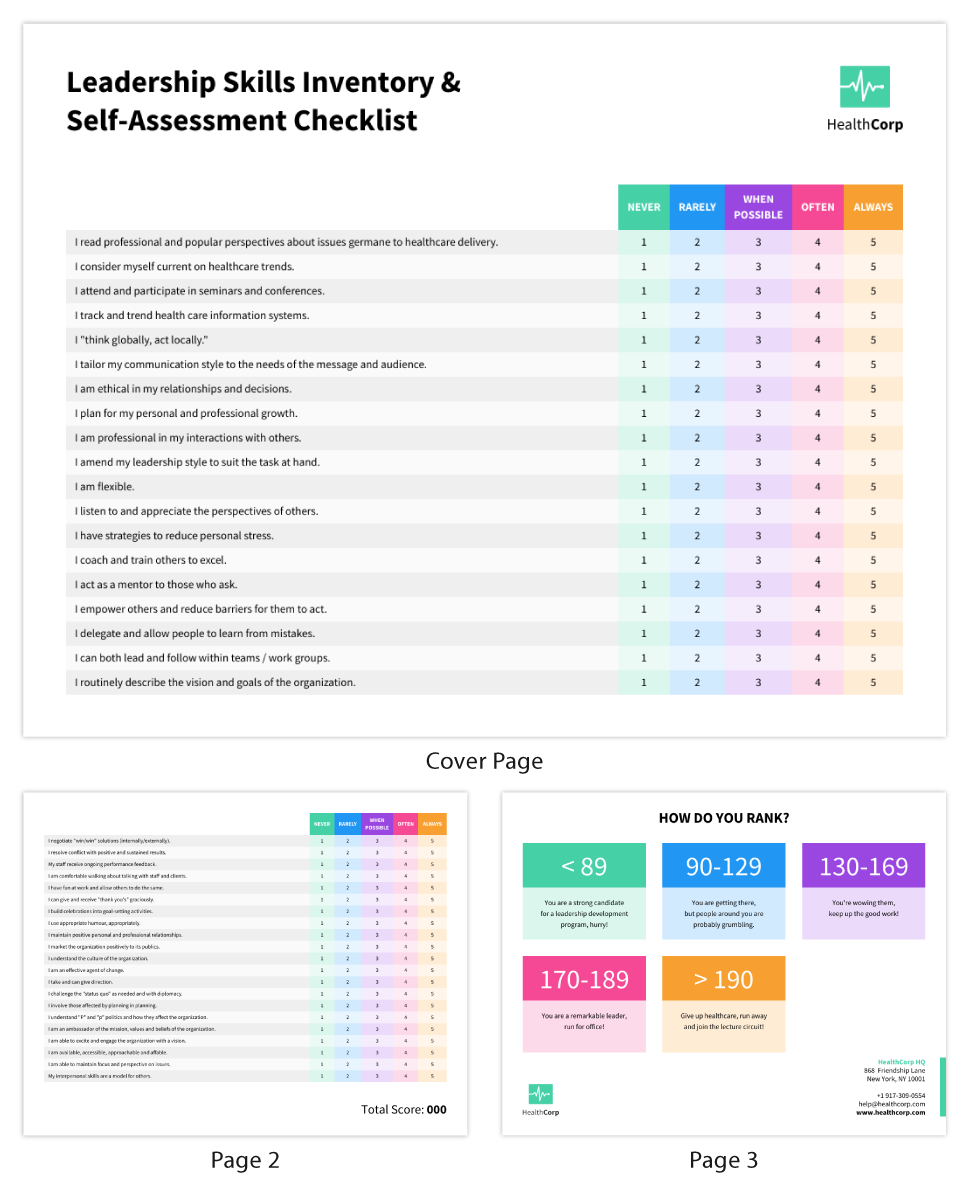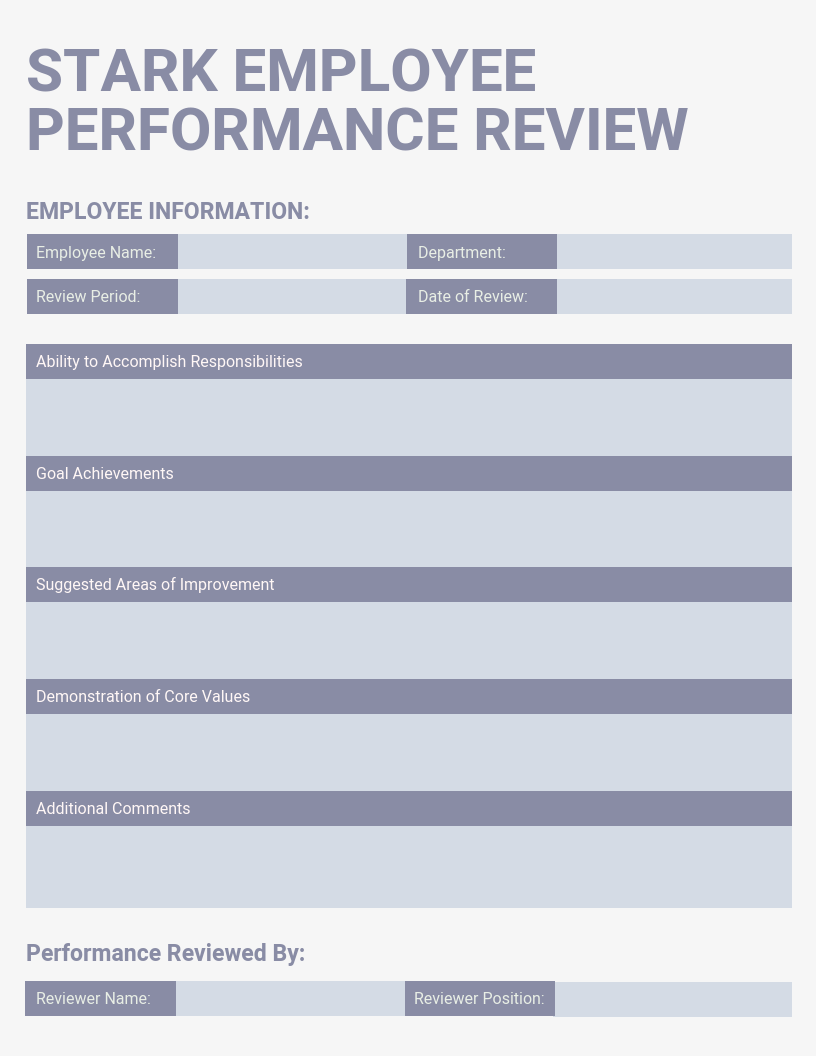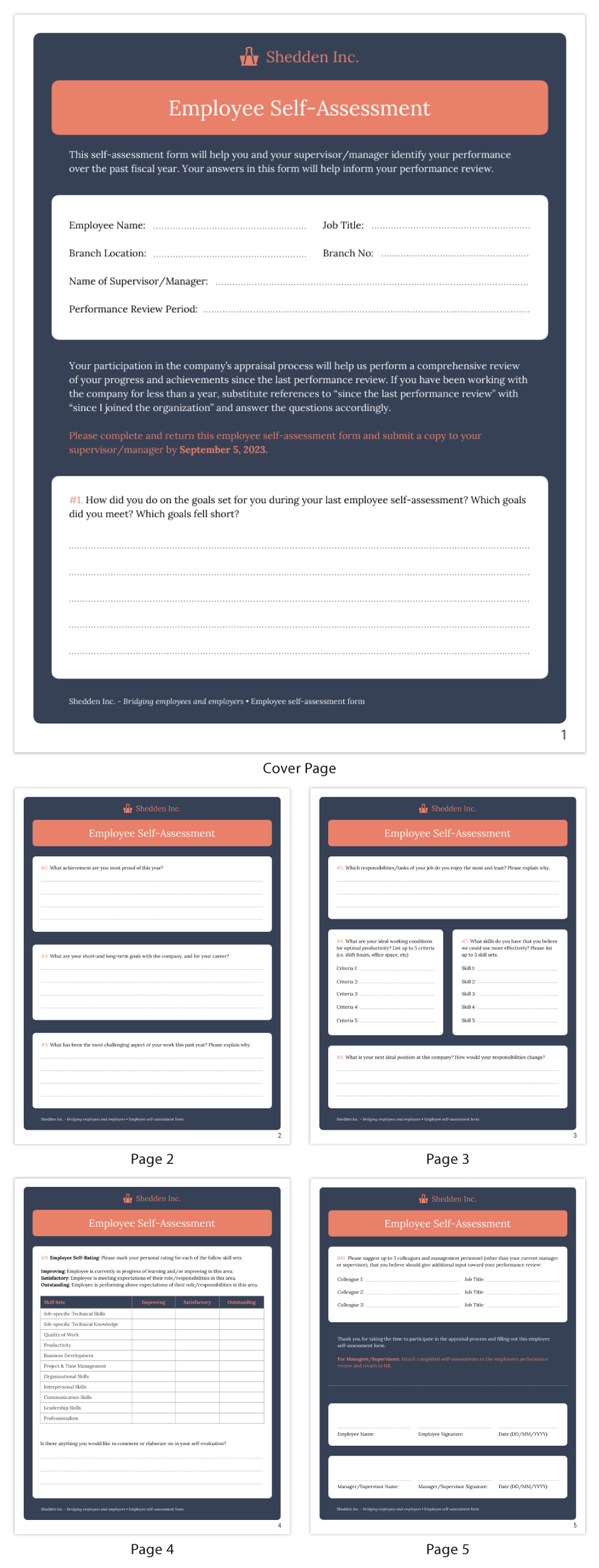It is par for the course across organizations to conduct a performance review. This is the best way for a company to grow and better itself, but how does one conduct reviews effectively?
The performance review process can be stressful, not just for employees but also for managers. This kind of tension isn’t good for anyone, especially not in the environment, health, and safety (EHS) field.
In this guide, we will share three ways to conduct a performance review for EHS employees, along with some tips for conducting appraisals.
If you aren’t sure how to conduct reviews, take inspiration from performance review examples, like the one below.
What Is the Purpose of Conducting Employee Reviews?
Performance reviews are a part of working life and are a method managers use to assess employees’ abilities, their strengths, and the areas where they still need improvement.
This is also a good exercise to learn about roadblocks employees may want to overcome and a way for them to share ideas for their team or the company.
Because the pandemic has caused numerous changes within the EHS field, conducting effective performance reviews is also beneficial in the change management process.
Changes in any company can be difficult to adjust to for all involved, and understanding how employees are placed in their roles will make the process easier.
Using a checklist, like the below example, will help people managers determine what areas require improvement and whether additional training is required.
Conducting an Effective Performance Appraisal Meeting
EHS organizations have continued to work within their office spaces, but certain aspects of working life have gone virtual, particularly meetings.
Remote work is impacting company communications—HR and people managers will likely be conducting virtual performance reviews well into the future.
How can they make the appraisal process more effective while adhering to health and safety standards? We share three methods for EHS organizations to follow.
1. Create a Performance Review Template
One way to conduct a performance review quickly and efficiently is by designing a template. Having one kind of document to assess employees standardizes the process.
Templates, such as the example below, also make it easier for managers to complete the appraisal process on time.
However, it is important to remember that not all teams are the same, and they cannot be assessed by similar metrics. Therefore, it’s advisable to create a template for each department.
2. EHS Employee Self-Assessment
Conducting a performance appraisal doesn’t just mean sitting in a room with one’s manager and going through goals reached. Self-assessments are useful tools in this area.
Self-assessments are different from face-to-face performance reviews. Conducting an effective performance appraisal meeting allows managers and employees to have discussions, for one.
However, a self-assessment, like this example below, needs to be designed earlier and should have clear metrics that can be judged uniformly for every member of the team.
Here are the five steps to creating an employee self-assessment process.
1. Set Employee Goals
Before creating an employee self-assessment, managers should decide on key metrics such as the number of steps completed on time when implementing an EHS compliance program.
2. Assessment Teams
While the self-assessment document can be completed by employees, companies need to choose the right people to evaluate the responses.
The performance appraisal is conducted for the benefit of the team and the company. Therefore, peers, managers, and supervisors working with employees would be the right choice.
3. Scheduling Appraisal Meetings
Organizations also need to choose the right time to conduct assessments. Most companies conduct appraisals quarterly and annually, but that doesn’t work for EHS teams.
Conducting employee evaluations shouldn’t mean time away from crucial work, nor should it occur midway through a project—that could skew results.
Schedule the self-assessment and the appraisal meetings in advance so employees know when to expect them.
4. Information Gathering
Managers will need to gather some information before designing the self-assessment template. This is necessary to understand what goals employees should be achieving.
There are online systems to automate this process, but people managers can also run pulse surveys to gather details.
5. Performance Review Follow-Ups
A complete self-assessment isn’t the end of the process. Managers should schedule follow-up meetings to discuss what the employee wrote in the document.
This is the time to work through issues and discuss steps to improve workflow, management, or even the assessment process, which will help the company learn and grow.
3. Importance of Feedback When Conducting Appraisals
Because employee performance appraisals are conducted by managers, they need to include two-way communication.
This process isn’t just meant to help employees improve—performance reviews also direct the future growth for the company. Here’s how organizations can receive feedback from appraisals.
A. Get Immediate Feedback
Conducting a performance appraisal interview is a good way to get immediate feedback from employees.
Managers can begin by going through the review metrics and sharing areas of improvement or where they believe the employee has done well.
Then managers can open up the floor to receive feedback. It’s important to let the employee speak freely at this point, without interjection or judgment.
B. Emphasize Impact of Actions
While the performance appraisal may be conducted by an HR manager, a direct manager who understands the employee’s working environment could be brought in to solicit feedback.
It’s important to give and receive feedback on specific actions instead of on something vague. Don’t say “we were impressed by your performance with patients.” This could mean anything.
Instead, focus on the time when a patient began to break down upon receiving bad news and the employee was able to use empathetic dialogue to calm the person down.
This will enable the employee to understand what actions are more desirable and where his or her strengths lie.
C. Future Planning
Conducting staff appraisals isn’t a one-and-done deal. Once the feedback has been shared, give the employee a chance to repeat positive actions or avoid negative ones.
Use the performance review as a starting point to create a growth plan for the employee. This could also be an opportunity to review training materials to improve performance.
Conclusion: Conduct a Performance Review to Improve Your Team Performance
EHS organizations should be checking in with their employees about their work and areas for improvement. Conduct a performance review after every project to get the best results.
Remember to keep room for feedback and to plan out ways to learn from the appraisal meetings. Every appraisal is a chance to grow and improve for everyone involved.
 Ronita Mohan is a content marketer at Venngage, an online infographic maker and design platform. Mohan regularly writes about marketing, design, and small businesses. Ronita Mohan is a content marketer at Venngage, an online infographic maker and design platform. Mohan regularly writes about marketing, design, and small businesses.
Twitter: @Venngage |





